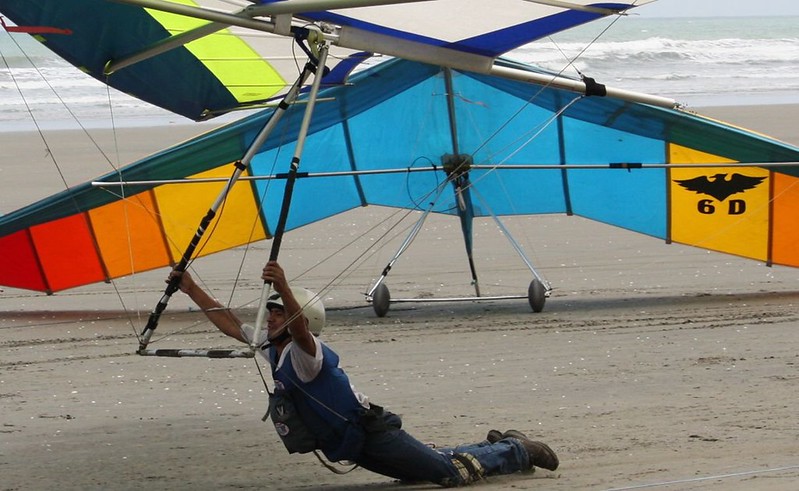Motivation




Rick Masters wrote:...and it kinda reminds me of this:

Rick Masters wrote:...and it kinda reminds me of this:

JoeF wrote:Motivation


Bill Cummings wrote:JoeF wrote:Motivation
At .25 speed you can see that the glider is drift in to its left indicating a right crosswind component.
When the glider comes to rest you can see the shadow of the left wheel not in contact with the left wheel.
This indicates to me that the landing was also downwind but only a light wind, only enough to keep the left wheel off of the ground.
To figure out what the wind is doing without GPS or tell-tales (flag) on the ground a pilot should:
With enough height pick out a spot on the ground and fly over it.
If on your way over the spot you had to crab (let's say) to the right (as this pilot would have had to do) to hold course to the spot, that means you have a right crosswind component.
NEXT, turn 90º to the right and then pick out another spot ahead and fly toward it. If on your way to the second spot you notice that you have to crab (as this pilot would have had to do) to the right again. At this point he would have known what fourth of the compass the wind was coming from. He would have eliminated 270º that the wind direction was not from and narrowed it down to 90º that the wind was coming from.
Next turn 45º to the right (in this pilots case) and pick out your landing spot. If on your way to the landing spot you have to crab either left or right to hold the spot that tells you within 22º what the direction is. Make that small correction straight into the wind. BINGO!


Bill Cummings wrote:JoeF wrote:Motivation
At .25 speed you can see that the glider is drift in to its left indicating a right crosswind component.
When the glider comes to rest you can see the shadow of the left wheel not in contact with the left wheel.
This indicates to me that the landing was also downwind but only a light wind, only enough to keep the left wheel off of the ground.
To figure out what the wind is doing without GPS or tell-tales (flag) on the ground a pilot should:
With enough height pick out a spot on the ground and fly over it.
If on your way over the spot you had to crab (let's say) to the right (as this pilot would have had to do) to hold course to the spot, that means you have a right crosswind component.
NEXT, turn 90º to the right and then pick out another spot ahead and fly toward it. If on your way to the second spot you notice that you have to crab (as this pilot would have had to do) to the right again. At this point he would have known what fourth of the compass the wind was coming from. He would have eliminated 270º that the wind direction was not from and narrowed it down to 90º that the wind was coming from.
Next turn 45º to the right (in this pilots case) and pick out your landing spot. If on your way to the landing spot you have to crab either left or right to hold the spot that tells you within 22º what the direction is. Make that small correction straight into the wind. BINGO!

Users browsing this forum: No registered users and 20 guests